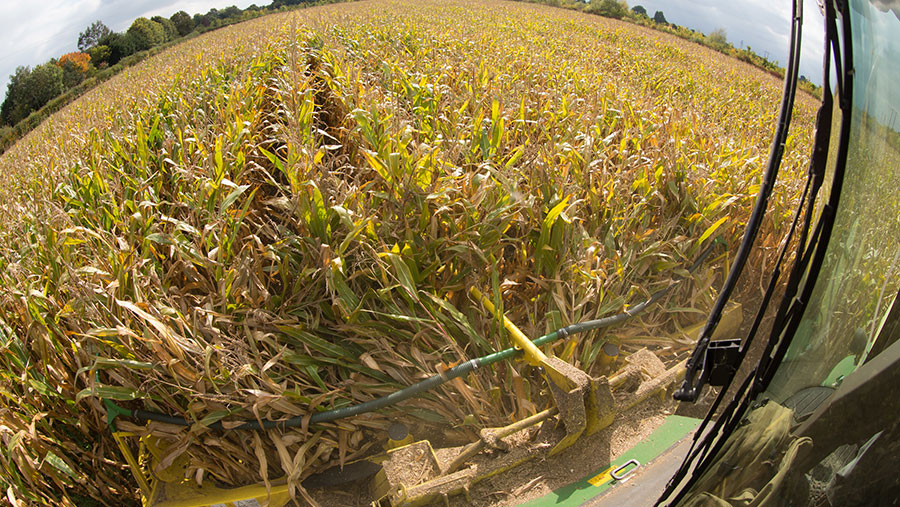Warnings of exceptionally high mycotoxin levels in maize
 © Tim Scrivener
© Tim Scrivener Livestock nutritionists are warning of exceptionally high levels of mycotoxin contamination in forage crops this season, with maize a source of specific concern.
A summer with high temperatures and drought has triggered production of mycotoxins, the harmful chemicals produced predominately by the fungi that grow in grains.
With the maize harvest under way this month, independent nutritionist Hefin Richards said forage quality was more variable that he had ever known.
See also: Maize Watch 2022 – advice for a safe maize harvest
“We are looking at a higher-risk season from mycotoxins,” he advised.
Any forage made in extreme weather is more at risk and, without intervention, this can have major consequences for herd health, such as depressed milk yield, poor fertility and impaired rumen function.
Be aware of the risk and look out for signs of problems, which could be poorer performance or swollen hocks and teat ends, urged Mr Richards, of Rumenation Nutrition Consultancy.
“Higher-yielding cows are more at risk as they tend to be more susceptible to any digestive upset,” he said.
“It is the dose that makes mycotoxins poisonous – they have to be at a high enough level or the result of an accumulation of different mycotoxins.”
Sampling
Sampling does not always provide the necessary answers, he said. “The test is only as good as that individual sample and there is a cost and time implication from sampling.”
Instead, Mr Richards recommends that when farmers suspect they may have an issue, they should incorporate a mycotoxin binder for a limited period.
“The most practical thing farmers can do is to use a binder as an investigative tool. If there is no change in seven to 10 days, it is not a mycotoxin issue,” he suggested.
“It will cost 5-6p/day, but it will either quickly solve the issue or confirm that the problem lies elsewhere, so it can be investigated.’’
Binders are highly effective, he said. “You can eliminate mycotoxins fairly quickly if you put in an effective binder.”
Not just maize
Although the spotlight for mycotoxin risk is being shone on maize, Mr Richards said it applies to any forage grown in stressed conditions.
“When there is a real heatwave, like we experienced this year, it is also possible to get mycotoxins in very dry grass silage.”
Farmers who buy in grain and by-products should also be aware of the risk.
“Even grain that is bought in a blend is a possible cause, although there is more chance of dilution from grain mixed with other grain,” said Mr Richards.
